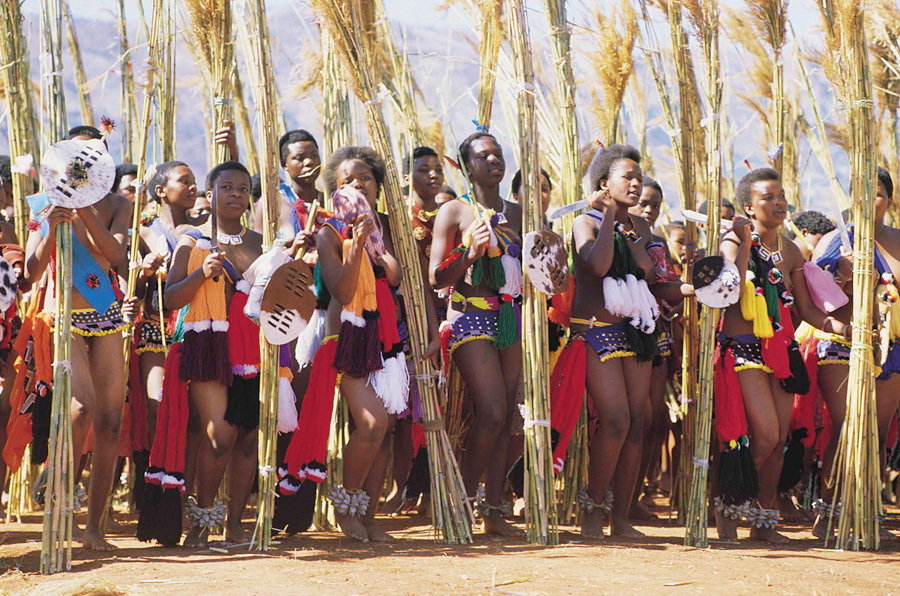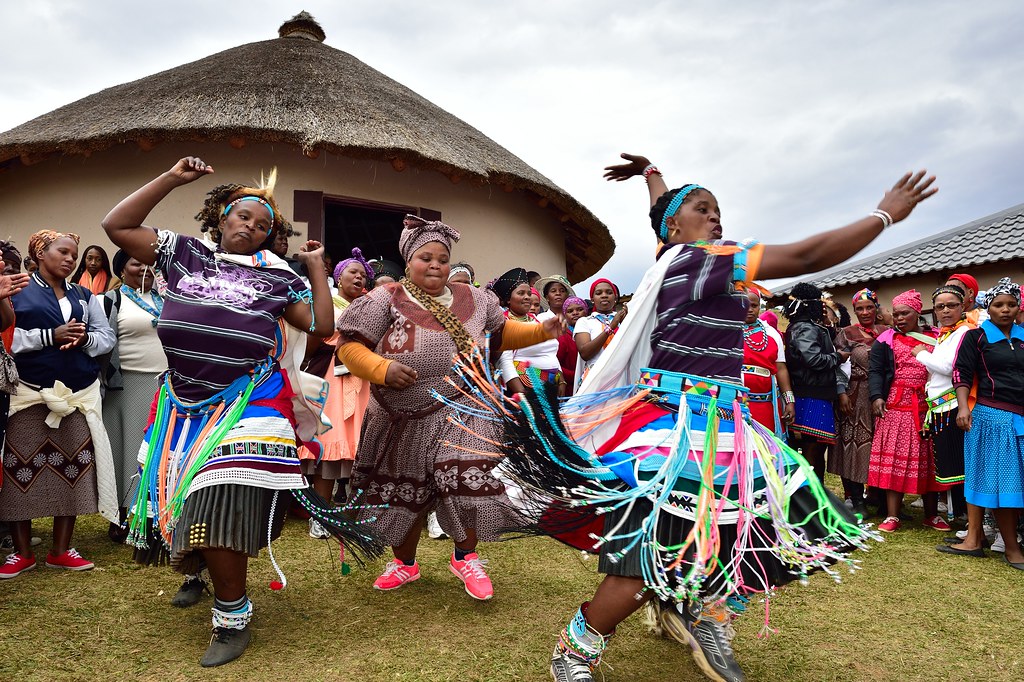Get This Report about South African Culture Today
Get This Report about South African Culture Today
Blog Article
South African Culture Today Fundamentals Explained
Table of ContentsThe Greatest Guide To South African Culture TodayRumored Buzz on South African Culture TodayAn Unbiased View of South African Culture TodayExcitement About South African Culture TodayThe Basic Principles Of South African Culture Today South African Culture Today Can Be Fun For Everyone
This adheres to with singing and drum whipping. The bride-to-be and bridegroom then meet the senior citizens and discuss the relevance of their union. An issue of importance in Zambian towns is the passing away of loved ones. All participants of the town put money, effort and time together for the burial of the deceased.Throughout the mourning duration; men stay outside your house and the females stay inside your home of the deceased. After discussing the departed, the village strolls to the place of burial to claim their last bye-byes. Music and dance is an extremely crucial facet of the Zambian society. The various tribal systems have their own dancing forms; however, makishi prevails amongst all tribes.
What Does South African Culture Today Mean?
When it pertains to songs, drums are made use of one of the most, with a selection of drumming ceremonies. In Zambia, majority of the people are Christian; Protestant and Roman Catholic. There are little teams of Muslims and Hindus, with the remainder following local indigenous tribal beliefs.

South African heritage and culture is exceptionally diverse, and includes lots of different teams of individuals that each have their very own practices and ideas. Having such a diversity of people and cultures is what makes South Africa so one-of-a-kind. In truth feeling of the phrase, we are a rainbow nation.
South Africa has roughly three hundred thousand Portuguese individuals residing in it. Making it the 7th on the checklist of countries with the most Portuguese individuals in it beyond Portugal. Portuguese is not just a society, but it is additionally a language and a citizenship. Portuguese people stem from the nation of Portugal in Europe, nonetheless, due to Portugal (like several various other nations in Europe) discovering the world and dominating other nations throughout the 15th 20th centuries, South Africa has what we call Portuguese South African's living in it.
South African Culture Today Things To Know Before You Get This
Amongst the popular features of the topography is a plateau that covers almost 2 thirds of the center of the country. The plateau complex climbs toward the southeast, where it culminates in the Drakensberg array, part of a cliff that separates the plateau from the seaside locations. The Drakensburg consists of Champagne Castle, the highest height in the nation.
The area north of the Witwatersrand, called the bushveld, inclines downward from eastern to west towards the Limpopo River, which develops the global border. The western area of the plateau, the middleveld, additionally comes down towards the west and varies in elevation between the highveld and bushveld. Between the Drakensburg and the eastern and southerly shoreline, the land descends to the sea.
Nearer the coast there is a low-lying plain called the eastern lowveld. Southwest of the plateau the country ends up being gradually a lot more arid, paving the way to the hostile desert of the Great Karroo, verged on the east by the lower, much better watered plateau of the Little Karroo. Dividing the dry southern interior from the sandy littoral of the southern coast and West Cape is an additional array, the Langeberg.
South African Culture Today Things To Know Before You Get This
The nation's racially, ethnically, and politically split background has generated national and subnational icons that still work as symbols of the country, and others icons that are approved just by particular teams. The monoliths to white settler occupation and political dominance, such as the Afrikaner Voortrekker ("leader") Monument in Pretoria and the Rhodes Monument honoring the British colonial realm builder and Cape head of state Cecil Rhodes, continue to be sectarian icons.
The first modern occupants were the San ("bushman") hunter-gatherers and the Khoi ("Hottentot") peoples, who rounded up animals (South African culture today). The San might have existed for countless years and left evidence of their visibility in hundreds of old cave paints ("rock art"). Bantu-speaking clans that were the ancestors of the Nguni (today's amaZulu, amaXhosa, amaSwazi, and vaTsonga individuals) and Tswana-Sotho language teams (today's Batswana and Southern and Northern Basotho) migrated below eastern Africa as very early as the fifteenth century

The 2 former republics of the Orange Free State and Transvaal (South African Republic) were established by Afrikaner settlers that beat and dispossessed the Basotho and Batswana. Lesotho would certainly have been forcibly incorporated into the Orange Free State without the extension of British security in 1869. The ultimate marriage of the nation arised from the South African Battle (18991902) click this between the British and both Afrikaner republics, which decreased the nation to spoil at the beginning of the twentieth century.
Afrikaners historically considered themselves the only real South Africans and, while approving full citizenship to all locals of European descent, refuted that condition to people of color up until the autonomous change of 1994. British South Africans keep a feeling of cultural and social link to Great Britain without weakening their identification as South Africans.
All About South African Culture Today
The diversity and fragmentation within ethnic collections and the equilibrium of stress in between those teams during the twentieth century avoided interethnic civil dispute. While intergroup tensions over resources, entitlements, and political dominance remain, those problems are as most likely to pit useful source Zulu versus Zulu as Zulu against Xhosa or African versus Afrikaner.
From colonial India, British merchants and managers brought the curved steel ornamental roofs and slender shoelace job pillars that still exemplify the terraces of homes in the areas and cities throughout the country. Residences of prayer contribute a vital architectural aspect even in the smallest towns. Along with the soaring steeples and traditional stonework of Afrikaans Dutch Reformed churches, Anglican churches, synagogues, mosques, and Hindu shrines give variety to the spiritual architectural scene.

Butchering and the developing of typical grain beer are important in protecting the participation and a good reputation of the forefathers who are taken into consideration the guardians of good fortune, success, and health. Indian communities keep their indigenous cooking customs and apply them on Islamic and Hindu ritual and ceremonial celebrations. Afrikaners and Coloured individuals gather at weekend breaks and special occasions at multifamily barbecues called braais, where area bonds are strengthened.
Since this was the main economic enterprise of both black Africans and white homesteaders, problem in between those groups fixated the property of grazing land and livestock. In 1867, the largest ruby deposits on the planet were found at Kimberley in the west central area. The riches from those fields aided finance the exploitation of the best gold coral reef on the click reference planet, which was discovered on the Witwatersrand in 1886.
The Basic Principles Of South African Culture Today
This brought about misunderstandings and intentional misrepresentation in the negotiations of white settlers and federal government authorities with African chiefs throughout the early american period (South African culture today). In the facility of African reserves, some elements of common and primarily "tribal count on" land period were maintained, and also in white backwoods, forms of public tenure were still practiced in locations with African areas
After the democratic transformation of 1994, programs for land restitution, redistribution, and reform were set up, however progression has actually been slow. The white minority still controls eighty percent of the land. In the wake of agricultural land intrusions in Zimbabwe, the Division of Land Affairs has actually vowed to speed land redistribution.
Report this page